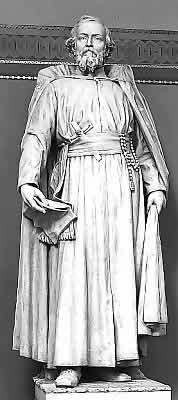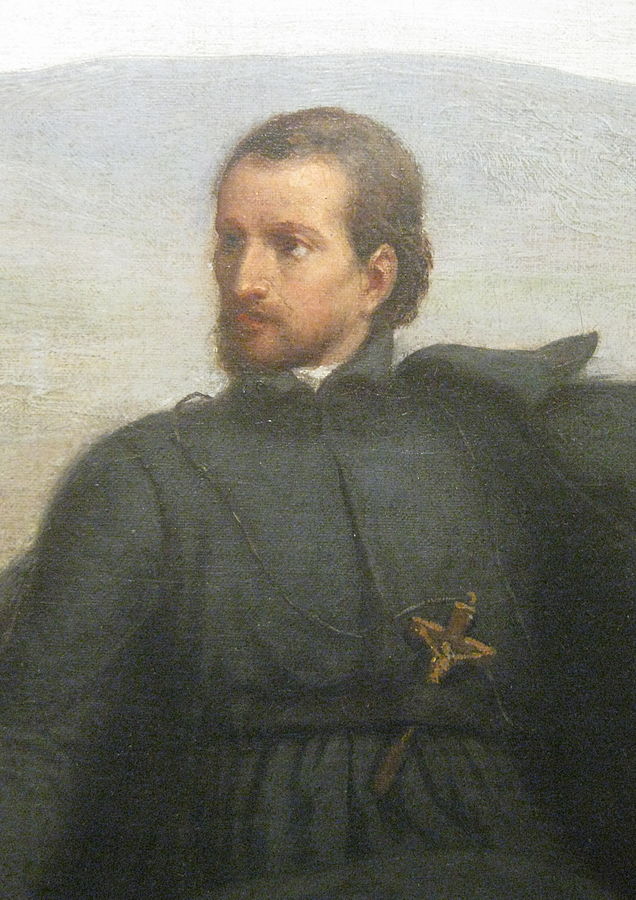A few days after Easter [1765, Father Marquette] left the [Illinois] village [of Kaskaskia], escorted by a crowd of Indians, who followed him as far as Lake Michigan. Here he embarked with his two companions. Their destination was Michilimackinac, and their course lay along the eastern borders of the lake. As, in the freshness of the advancing spring, Pierre and Jacques urged their canoe along that lonely and savage shore, the priest lay with dimmed sight and prostrated strength, communing with the Virgin and the angels. On the nineteenth of May, he felt that his hour was near; and, as they passed the mouth of a small river, he requested his companions to land. They complied, built a shed of bark on a rising ground near the bank, and carried thither the dying Jesuit. With perfect cheerfulness and composure, he gave directions for his burial, asked their forgiveness for the trouble he had caused them, administered to them the sacrament of penitence, and thanked God that he was permitted to die in the wilderness, a missionary of the Faith and a member of the Jesuit brotherhood. At night, seeing that they were fatigued, he told them to take rest, saying that he would call them when he felt his time approaching. Two or three hours after, they heard a feeble voice, and, hastening to his side, found him at the point of death. He expired calmly, murmuring the names of Jesus and Mary, with his eyes fixed on the crucifix which one of his followers held before him. They dug a grave beside the hut, and here they buried him according to the directions which he had given them; then, re-embarking, they made their way to Michilimackinac, to bear the tidings to the priests at the mission of St. Ignace.*

Map of St Ignace, MI showing location of Jesuit mission. It was the site of a mission established by Père Jacques Marquette, and the site of his grave in 1677.
In the winter of 1676, a party of Kiskakon Ottawas were hunting on Lake Michigan; and when, in the following spring, they prepared to return home, they bethought them, in accordance with an Indian custom, of taking with them the bones of Marquette, who had been their instructor at the mission of St. Esprit. They repaired to the spot, found the grave, opened it, washed and dried the bones and placed them carefully in a box of birch-bark. Then, in a procession of thirty canoes, they bore it, singing their funeral songs, to St. Ignace of Michilimackinac. As they approached, priests, Indians, and traders all thronged to the shore. The relics of Marquette were received with solemn ceremony, and buried beneath the floor of the little chapel of the mission.
* The contemporary Relation tells us that a miracle took place at the burial of Marquette. One of the two Frenchmen, overcome with grief and coli, bethought him of applying a little earth from the grave to the seat of pain. This at once restored him to health and cheerfulness.
Francis Parkman, La Salle and the Discovery of the Great West, Vol. III of France and England in North America (Boston: Brown, and Company, 1897), vol. I, 80-1.
Stories on Honor, Chivalry, and the World of Nobility—no. 621










